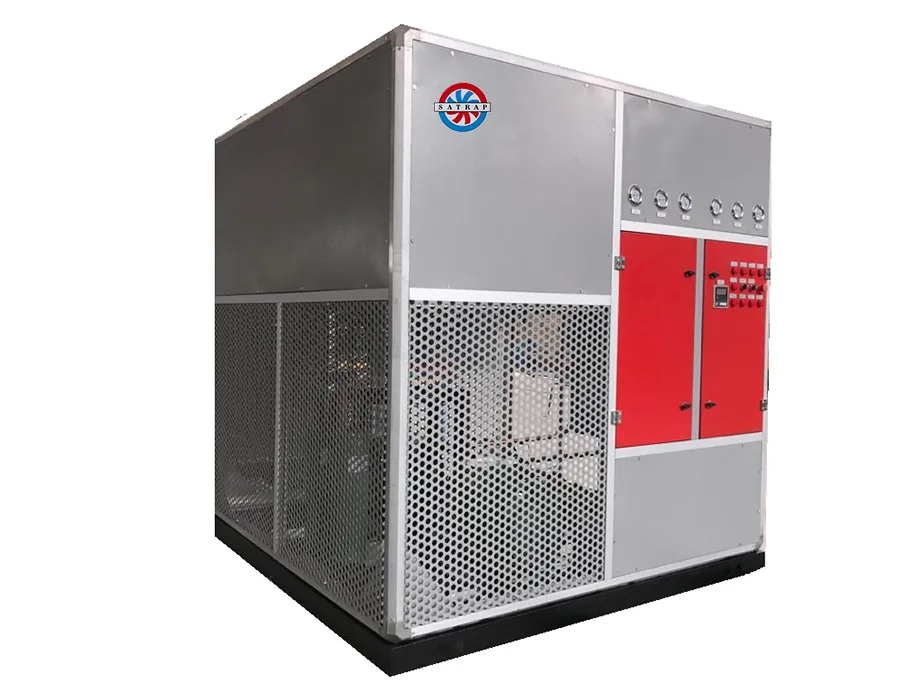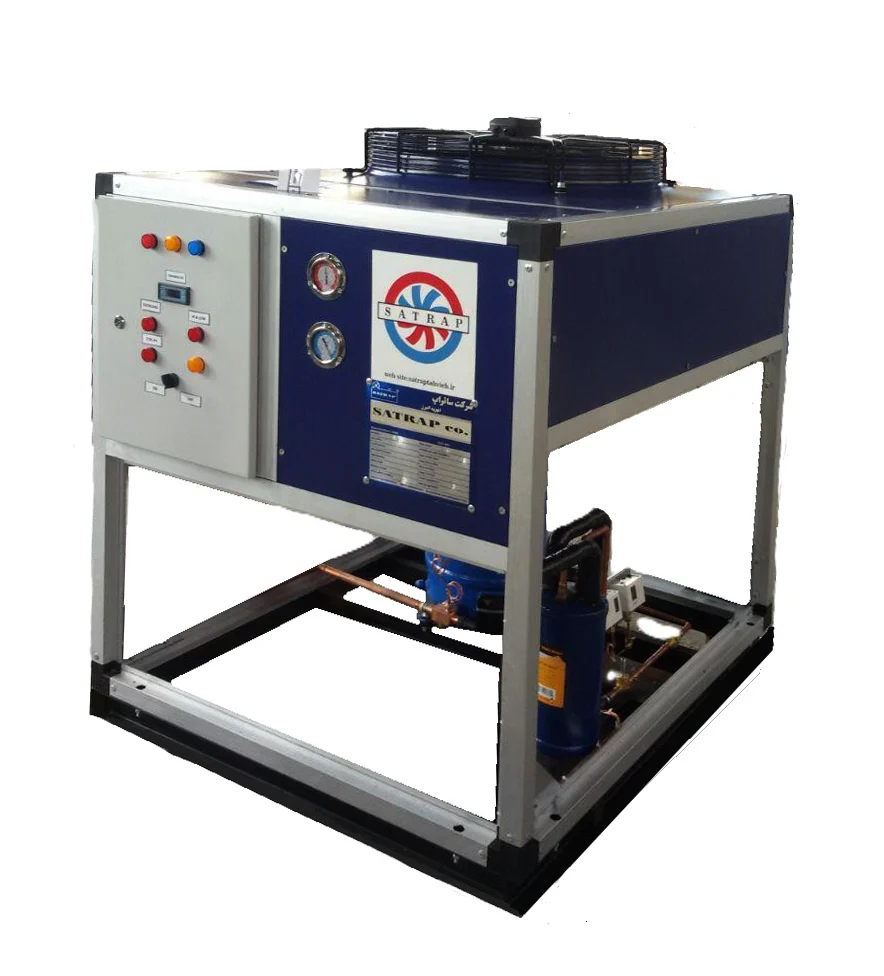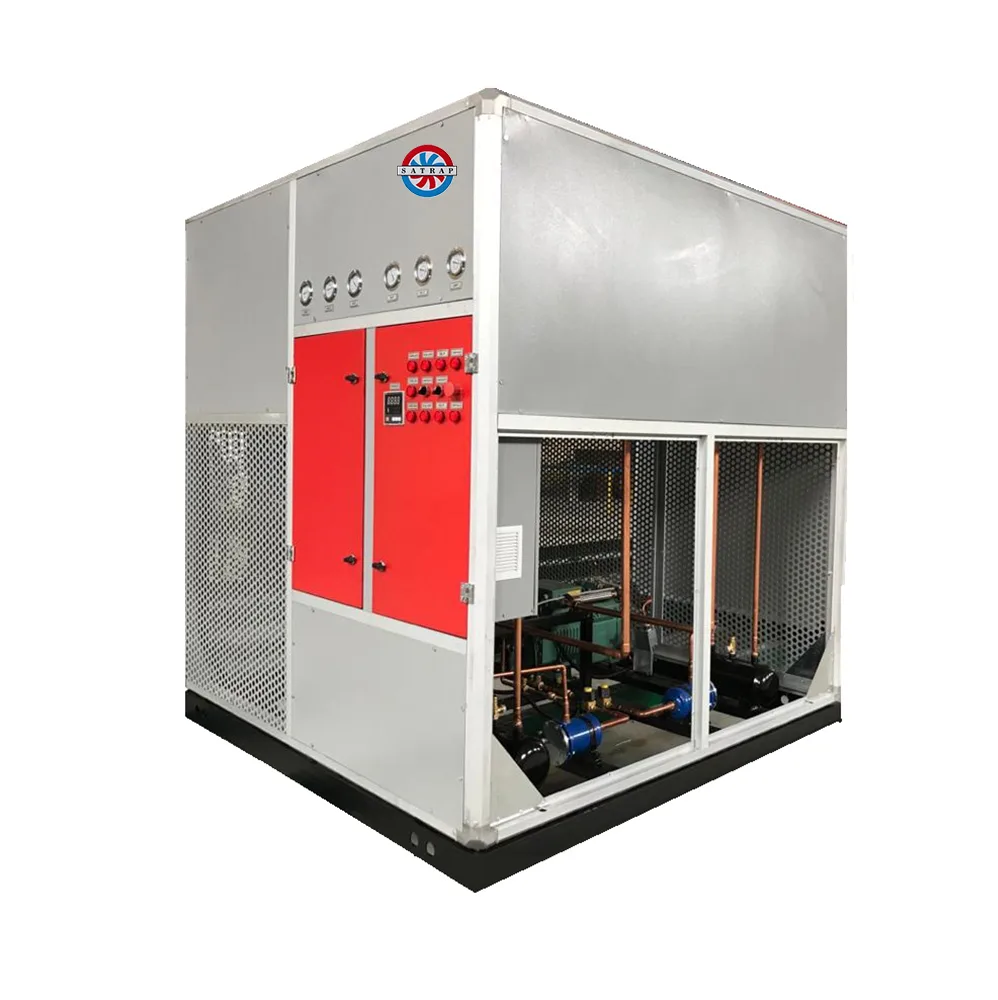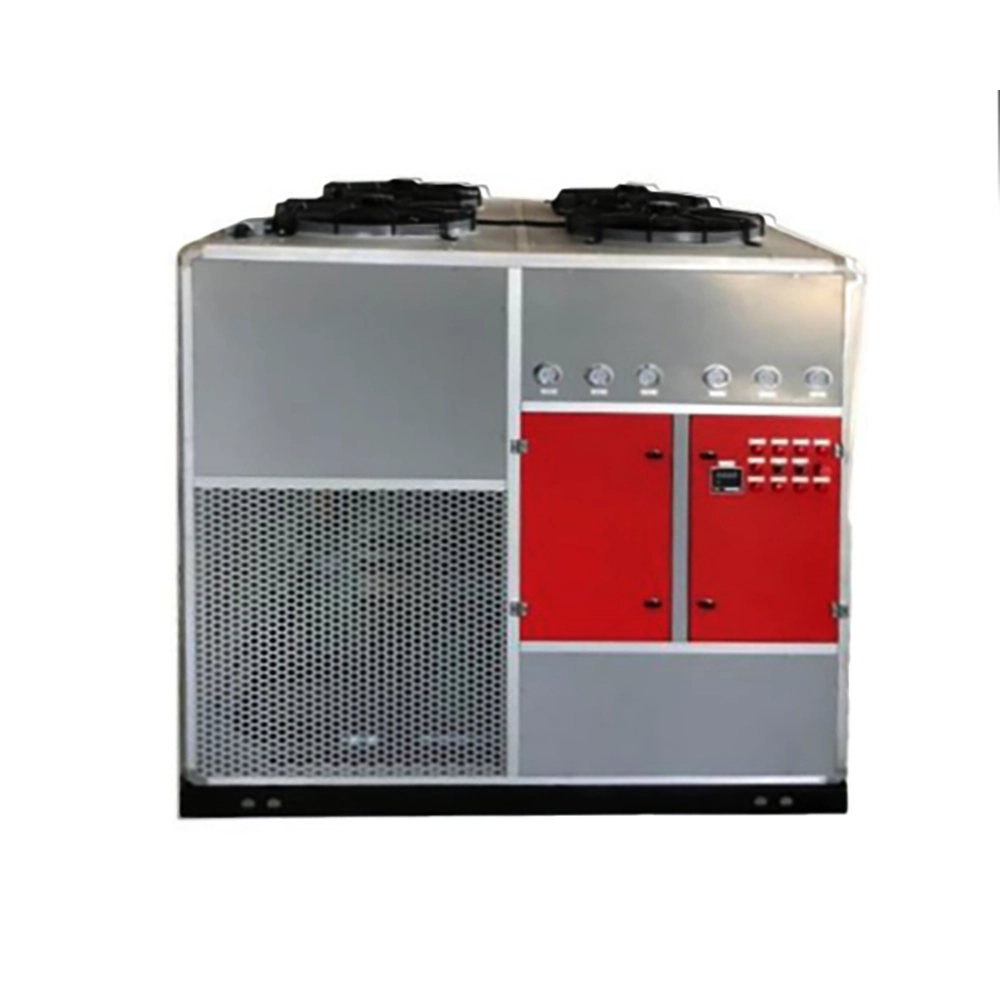Description
A condensing unit is a device used in air conditioning and refrigeration systems that condenses the refrigerant gas compressed by the compressor.
Components of a Condensing Unit
The main components of a condensing unit are:
Compressor
The compressor is the heart of the condensing unit and is responsible for compressing the refrigerant. Compressors are available in two types: reciprocating and rotary. Reciprocating compressors are used in low-capacity applications, while rotary compressors are used in high-capacity applications.
Condenser
The condenser is responsible for converting the refrigerant from a gaseous to a liquid state. Condensers are available in two types: air-cooled and water-cooled. In air-cooled condensers, ambient air is used to cool the condenser. In water-cooled condensers, water is used to cool the condenser.
Fan
The fan circulates air around the condenser and helps to cool it. Fans are used in air-cooled condensers.

expansion valve
The expansion valve reduces the pressure of the refrigerant and turns it into liquid vapor. The expansion valve is located at the outlet of the condenser.
Refrigerant pipes
Refrigerant pipes transfer the refrigerant fluid between the different components of the condensing unit. Refrigerant pipes are made of copper or aluminum.
Other components
In addition to the main components, the condensing unit may have other components, which are:
- Electrical panel: The electrical panel is responsible for controlling and monitoring the operation of the condensing unit.
Thermostat: The thermostat is responsible for controlling the temperature of the environment.
Pressure and temperature detector: The pressure and temperature detector is responsible for monitoring the pressure and temperature of the refrigerant.
Safety valve: The safety valve is responsible for preventing the refrigerant pressure from increasing.
Application of condensing unit
Condensing units are used in air conditioning and refrigeration systems for cooling and heating purposes. In air conditioning systems, the condensing unit is responsible for producing cold air, which is then distributed to the environment by the air handler. In refrigeration systems, this device is responsible for producing cooling, which is used to cool food and industrial products.

Types of condensing units
Condensing units are classified into two categories based on the type of cooling fluid: air-cooled and water-cooled.
Air-Cooled Condensing Units
In air-cooled condensing units, ambient air is used to cool the condenser. These units are more affordable and simpler than water-cooled condensing units. They are also easier to install and maintain.
Air-cooled condensing units are available in various capacities and are used for various applications, including air conditioning of buildings, small cold rooms, and commercial refrigerators.
Water-Cooled Condensing Units
In water-cooled condensing units, water is used to cool the condenser. These units are suitable for large industrial and commercial applications that require high capacity.
Water-cooled condensing units are more expensive and complex than air-cooled condensing units. They are also more challenging to install and maintain.
Air-cooled vs. Water-cooled Condensing Units
Air-cooled condensing units
- Less expensive
- Simpler
- Easier to install and maintain
- Lower capacities
- Suitable for small commercial and residential applications
Water-cooled condensing units
- More expensive
- More complex
- More difficult to install and maintain
- Higher capacities
- Suitable for large commercial and industrial applications
Choosing the right condensing unit
To choose the right condensing unit, you must consider various factors, including capacity, application type, and environmental conditions.
- Capacity: The condensing unit’s capacity must match the user’s needs. Condensing unit capacity is usually expressed in tons of refrigeration (TR) or BTU/hr.
- Application type: Condensing units are used for various applications, including air conditioning, refrigeration, and industrial processes. The type of condensing unit must be suitable for the application.
- Environmental conditions: Environmental conditions such as temperature and humidity must be considered when choosing the right condensing unit.
For example, a 1-ton TR air-cooled condensing unit is sufficient for a small residential building. However, a 100-ton TR water-cooled condensing unit is required for a large industrial cold storage facility.
Condensing units are also classified into two categories based on the compressor type: reciprocating and rotary. Reciprocating compressors are used in low-capacity applications, while rotary compressors are used in high-capacity applications.
Advantages of condensing unit
Condensing units offer a number of advantages, including:
- Precise temperature control: Condensing units can precisely control the temperature of an environment, which can lead to increased comfort and satisfaction for users.
- Energy efficiency: Modern condensing units incorporate energy-saving features that can reduce energy consumption.
- Long lifespan: With proper maintenance and repair, condensing units can have a long lifespan.
- Versatile applications: Condensing units are used for a variety of applications, including air conditioning, refrigeration, and industrial processes.
Specific Advantages of Air-Cooled Condensing Units
- Easy installation: Air-cooled condensing units do not require a water cooling system, making them easier to install.
- Low maintenance costs: Air-cooled condensing units do not require complex maintenance, resulting in lower maintenance costs.
Specific Advantages of Water-Cooled Condensing Units
- Higher efficiency: Water-cooled condensing units are more efficient than air-cooled units, as they can operate at higher condensing temperatures.
- Lower noise levels: Water-cooled condensing units operate at lower noise levels than air-cooled units, making them ideal for noise-sensitive environments.
- Reduced environmental impact: Water-cooled condensing units use less energy than air-cooled units, resulting in a reduced environmental impact

Condensing Units from Satraptahvieh Alborz
Condensing units are cooling systems, with a refrigeration system, it creates optimal cooling for various environments. Usually, this device is used together with an air conditioner for air conditioning. Contact our experts to order the condensing unit.


Reviews
There are no reviews yet.